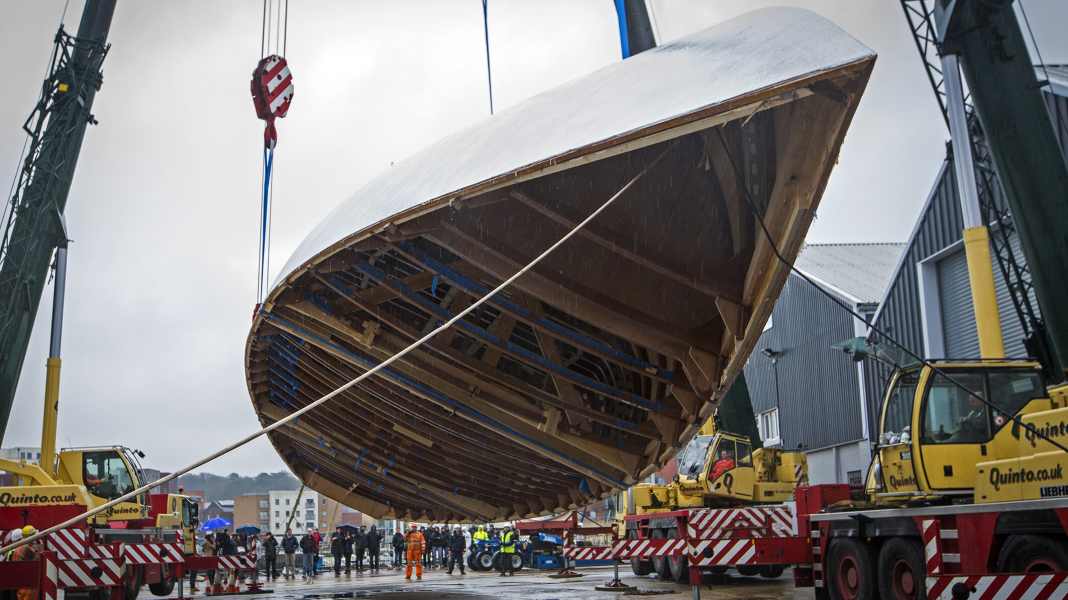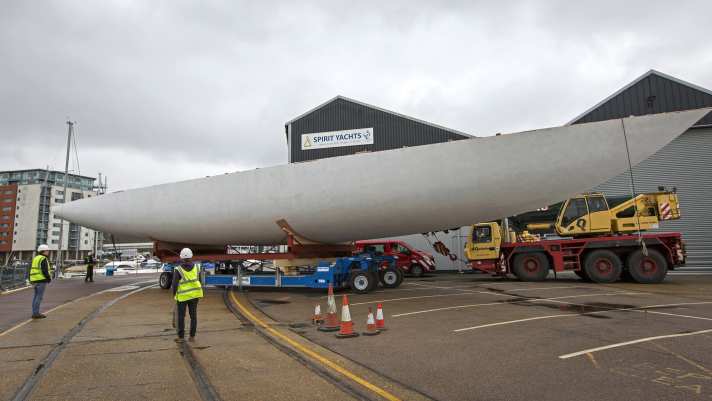
Fortunately, Ipswitch is not a metropolis. Luckily it's winter, so it's not tourist season. Luckily it was pouring with rain yesterday. Otherwise, the spectacular event in front of the Spirit Yachts factory gates would have provoked mass gatherings in the pretty town in the south-east of the UK.
In the early hours of Tuesday afternoon, the product of thousands of man hours was rolled out into the open, a colossus 34 metres long and 6.40 metres wide, which will nevertheless look extremely elegant in its actual element - construction number 1 of the spectacular Spirit 111.
Three large mobile cranes were needed to turn the huge mahogany construction during yesterday's "shoot" on the banks of the River Orwell. A feat of strength in slow motion. Shipyard boss Sean McMillan, who also designs his own models, spoke of a "historic moment".

This action is part of the construction process at Spirit. The hull is initially built upside down using the moulding method. First of all, the ring frames made of moulded wood are placed, which are connected to a central stainless steel structure that absorbs keel and rigging forces. The longitudinal stringers and deck beams are then fitted before the boat builders start planking.
The final step is four diagonal layers of veneer strips, all glued with epoxy and tempered under vacuum at 45 degrees Celsius, before the whole thing is coated with a layer of glass fibre. A complex method, but one that guarantees maximum strength at a relatively low weight.
The Spirit 111 will be the largest wooden sloop ever built since the 1930s - a retro classic in superyacht format. The length-to-width ratio of the ship is 5.2:1, which is more than twice as long as that of a Pogo 30 (2.5:1). One can therefore assume a tantalising appearance.
But she still has a year and a half of expansion and technical installations ahead of her, and they are also very demanding.
Together with the shipyard, the owner has favoured a diesel-electric drive concept. The Spirit 111 is to be driven purely electrically for harbour and anchor manoeuvres as well as short distances - with a 160 kW high-voltage motor supplied by Torqeedo. It is powered by four lithium-ion battery banks from the BMW i3, which are charged by two generators on longer journeys. When sailing, the electric motor itself serves as a generator and in turn charges the batteries.
Hydraulically driven winches and outriggers are designed to reduce the operating effort of the yacht, which has an almost J-class format, to such an extent that the Spirit can also be sailed without a professional crew. Despite her length, she remains a pleasure for the few. Only four compartments with a total of eight berths are provided below deck.
